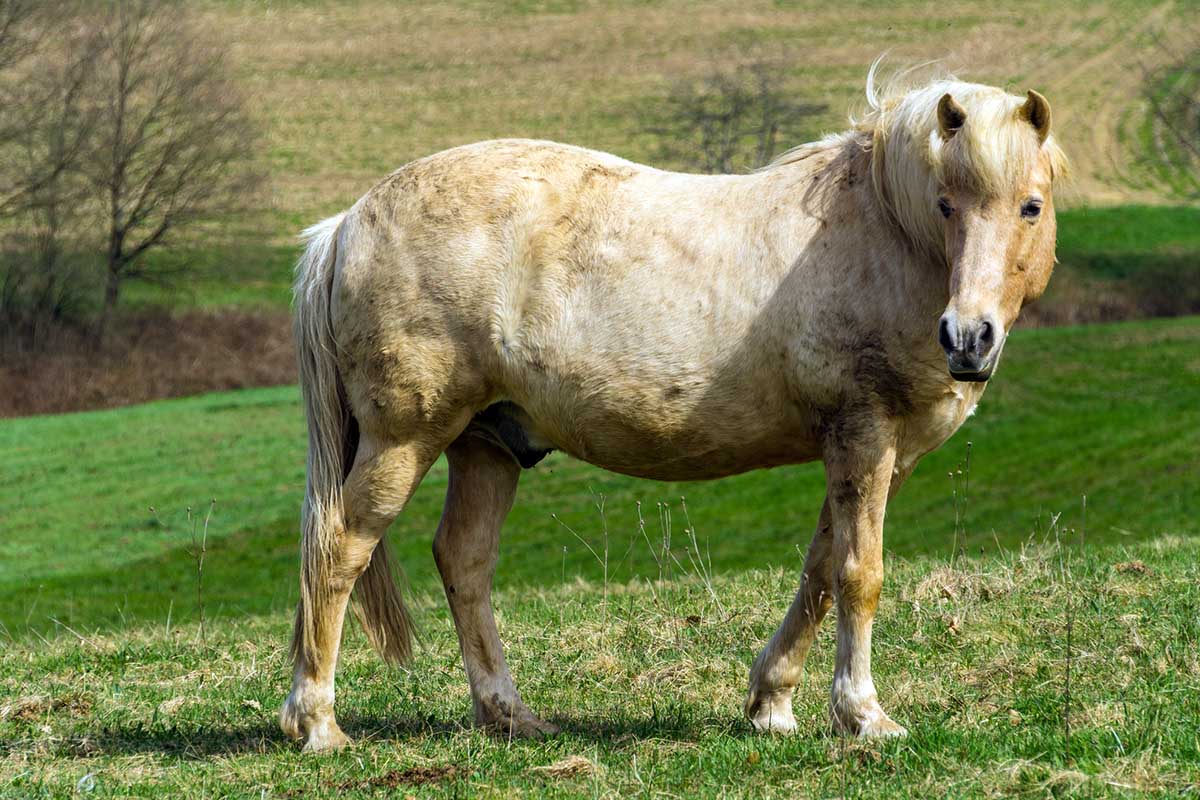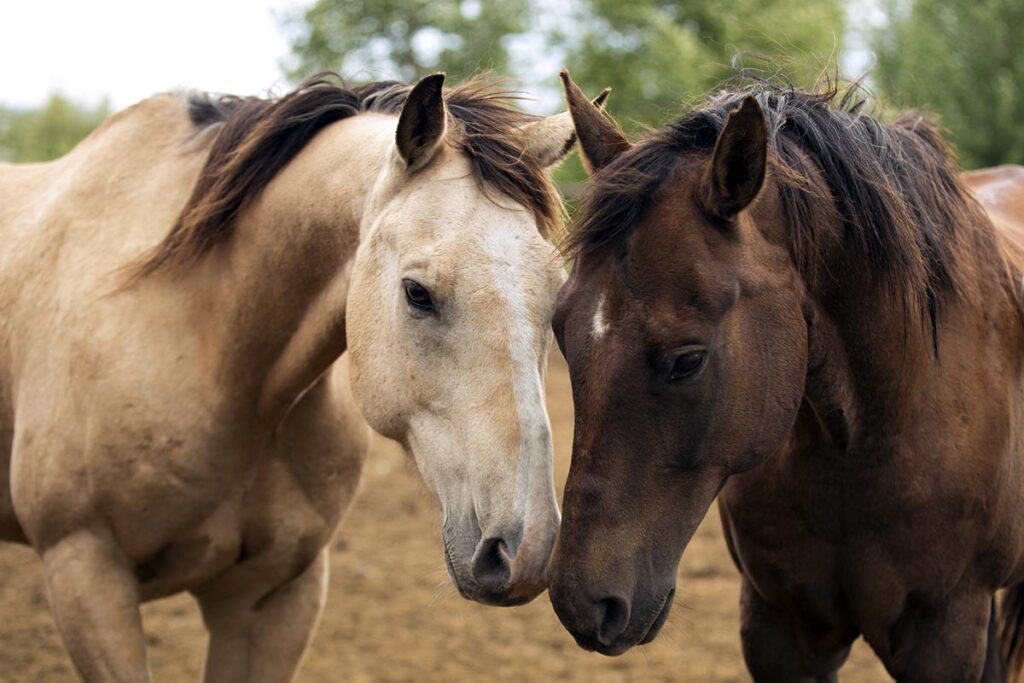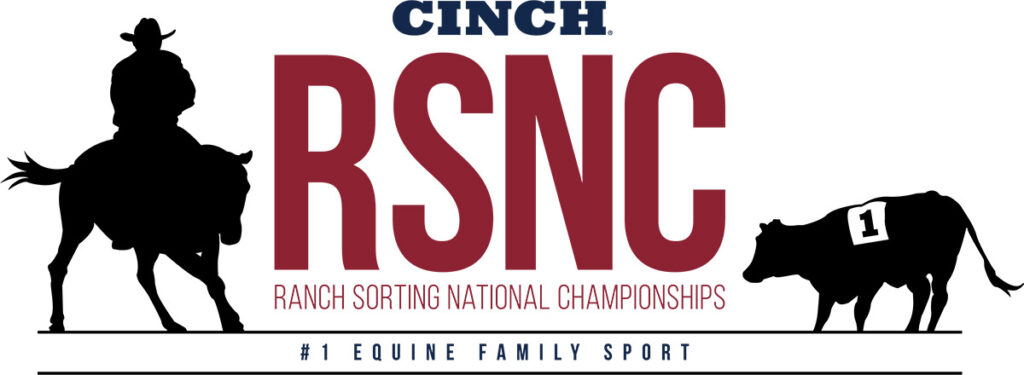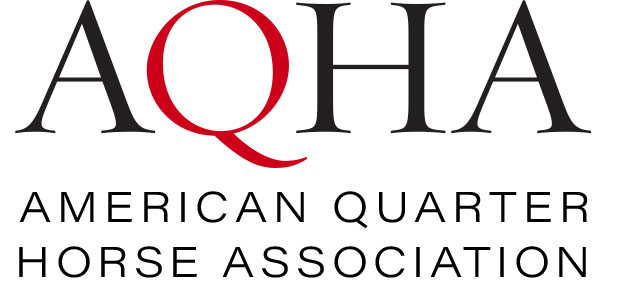The way to your horse’s heart might seem like it’s through his feed bucket. He’s just so happy to see you coming down the barn aisle at feed time. Overweight horses and those with equine metabolic syndrome (EMS), however, need strict dietary controls. Otherwise, they can end up at risk of developing an extremely painful hoof disease called laminitis.
Regardless of whether your hefty horse has received an official EMS diagnosis, here are some steps you can take to keep him healthy and in good weight.
Understanding Equine Metabolic Syndrome
First, let’s review the umbrella term equine metabolic syndrome. This condition encompasses a combination of factors, including obesity, insulin dysregulation, and susceptibility to laminitis. Some people liken the condition to type 2 diabetes in humans.
Understanding that your horse might have metabolic syndrome involves recognizing signs like weight gain and unusual fat deposits (often in the crest of the neck and top of the tail). A veterinarian’s diagnosis is key, and they can perform tests to check blood glucose and insulin levels. These are pivotal to creating a tailored nutrition plan.
Forage Feeding Tips
The right hay, in the right quantity, is imperative for maintaining a metabolic horse’s health and weight. When it comes to selecting forage for your horse, not all hay types are created equal. Grass hays, such as Timothy or orchardgrass, are suitable due to their relatively low nonstructural carbohydrate (NSC) content. NSCs include sugars and starches that, when consumed in excess, can cause insulin levels to spike.
Avoid feeding metabolic horses alfalfa hay. This nutrient-rich option can contribute to weight gain. Ask your hay supplier about the cutting or maturity of a hay batch, as more mature hay typically has lower sugar levels. You can also get your hay tested to confirm its NSC content. When feeding metabolic horses hay:
- Feed 1.5-2% of your horse’s body weight in forage daily. Use a hay net with small holes to slow down consumption and stretch out his hay supply.
- Consider soaking your horse’s hay for 30 minutes to reduce sugar levels. Just remember to throw the water out before feeding!
- Split feedings into multiple smaller meals to keep the gut moving and manage insulin levels.
Related Reading: Your Ultimate Guide to the Different Types of Horse Hay
Grains and Ration Balancers
The world of horse feeds and ration balancers can be overwhelming. The key is to strike a balance between providing necessary nutrients and avoiding those that could potentially harm a horse with metabolic issues. Safe feed options include:
- Low or No-Grain Diets: Most metabolic horses do best on low-NSC diets, which often means little to no grain. Concentrates designed for easy keepers are available and usually have NSC info available. Feeding small quantities of grain automatically lowers a horse’s NSC consumption, but be sure to offer a vitamin and mineral supplement when going this route.
- Ration Balancers: A good way to meet a metabolic horse’s nutritional requirements without overfeeding calories is with a ration balancer, which provides the necessary protein, vitamins, and minerals without additional energy from grains.
- Added Fat: If your horse needs additional calories to maintain body condition, fat sources (e.g., flaxseed, vegetable or fish oil, feeds with high fat levels) can provide those and are less likely to trigger a metabolic response.
- Small Meals: If you do feed your horse concentrates, split rations into small, frequent meals to avoid insulin spikes.
Related Reading: How To Choose Horse Feed: It’s All About Balance
Pasture: Paradise or Pitfall?
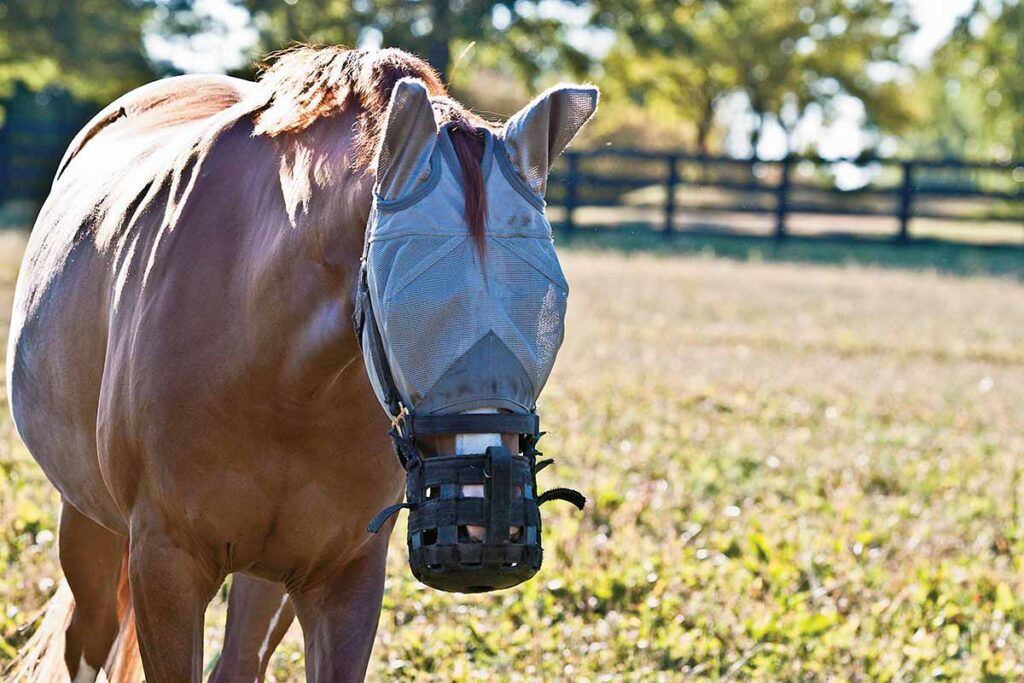
Pasture can be both a horse’s haven and a liability for those with metabolic issues. During early spring and fall, the sugar content in grass is often high, putting horses at risk for insulin spikes and laminitis episodes. Here are some strategies for managing a metabolic horse’s pasture access:
- Managed Turnout: Consider a drylot or small, managed pasture turnout to limit your horse’s access to grass.
- Nighttime Grazing: The sugars in grasses are lowest at night, so consider turning your overweight horse out overnight and taking him off pasture at sunrise. This strategy is only effective, however, when temperatures remain above 40 degrees F.
- Muzzles: Equip your horse with a grazing muzzle during turnout to minimize his grass consumption while still allowing for exercise and socialization.
Related Reading: Spring Grazing: The Risks of Fresh Grass for Horses
The Importance of Weight Management
Maintaining a healthy weight can be an uphill battle when it comes to horses with metabolic issues. Yet, it’s one of the most vital aspects of their care. This is where body condition scoring is crucial.
Body condition scoring (BCS) is a universal tool used to evaluate a horse’s weight and the distribution of body fat. For horses with metabolic issues, achieving and maintaining a healthy score (around 5, on a scale of 1-9) can help reduce the risk of complications such as laminitis. Evaluate your horse’s BCS (here’s how) every 30-60 days to gauge the efficacy of your diet and exercise program.
Watch: How To Help Your Horse Lose Weight
Take-Home Message
It all begins with balance. The key to feeding a metabolic horse is not to eliminate or drastically reduce food intake but to strike a balance that meets his nutritional needs without exacerbating underlying conditions. Work with your veterinarian or an equine nutritionist to ensure you’re tailoring your overweight or metabolic horse’s diet to his individual needs.
This article is brought to you by Sentinel Horse Feed.
Are you enjoying this content? Sign up for My New Horse’s FREE newsletter to get the latest horse owner info and fun facts delivered straight to your inbox!

